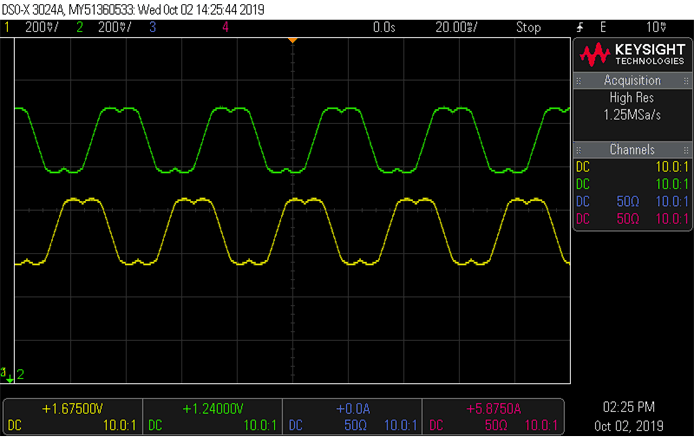SPRACO3 October 2019 INA240 , LMG5200 , TMS320F280021 , TMS320F280021-Q1 , TMS320F280023 , TMS320F280023-Q1 , TMS320F280023C , TMS320F280025 , TMS320F280025-Q1 , TMS320F280025C , TMS320F280025C-Q1 , TMS320F280040-Q1 , TMS320F280040C-Q1 , TMS320F280041 , TMS320F280041-Q1 , TMS320F280041C , TMS320F280041C-Q1 , TMS320F280045 , TMS320F280048-Q1 , TMS320F280048C-Q1 , TMS320F280049 , TMS320F280049-Q1 , TMS320F280049C , TMS320F280049C-Q1 , TMS320F28374D , TMS320F28374S , TMS320F28375D , TMS320F28375S , TMS320F28375S-Q1 , TMS320F28376D , TMS320F28376S , TMS320F28377D , TMS320F28377D-EP , TMS320F28377D-Q1 , TMS320F28377S , TMS320F28377S-Q1 , TMS320F28378D , TMS320F28378S , TMS320F28379D , TMS320F28379D-Q1 , TMS320F28379S
-
Dual-Axis Motor Control Using FCL and SFRA On a Single C2000 MCU
- Trademarks
- 1 Introduction
- 2 Benefits of the C2000 for High-Bandwidth Current Loop
- 3 Current Loops in Servo Drives
- 4 PWM Update Latency for Dual Motor
- 5 Outline of the Fast Current Loop Library
- 6 Evaluation Platform Setup
- 7 System Software Integration and Testing
- 8 Summary
- 9 References
7.1.2 Testing SVGEN With DACs
To monitor internal signal values in real time, on-chip DACs are used. DACs are part of the analog module DACs A and B are available for this purpose. This is shown in Figure 21.
 Figure 21. DAC Outputs Showing Ta, Tb Waveform
Figure 21. DAC Outputs Showing Ta, Tb Waveform The operation suggested above for motor 1 that can be repeated for motor 2 also to verify the related modules. To use DACs for motor 2, change the linked variables to DACs for motor 2 as the following example code in motor1ControlISR() in " dual_axis_servo_drive.c".
//------------------------------------------------------------------------------
// Variable display on DACs
//------------------------------------------------------------------------------
DAC_setShadowValue(hal.dacHandle[0], DAC_MACRO_PU(motorVars[1].svgen.Ta));
DAC_setShadowValue(hal.dacHandle[1], DAC_MACRO_PU(motorVars[1].svgen.Tb));
NOTE
Remove the R20 on both BOOSTXL-3PhGaNInv boards, or disconnect J3-30 and J7-70 pins to both BOOSTXL-3PhGaNInv boards.